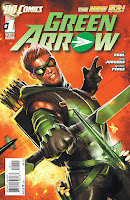Comics were huge in the Nineties. I’m not even sure “huge” is the word for it. They were really something else. Maybe a synonym can explain it:
Synonyms for huge
Regardless, it was a hell of an industry. Top 20 comics regularly sold in the hundreds of thousands of copies per month. Variants and other methods were exploited to exhaustion. Perhaps the single largest problem was the speculator boom–thousands, if not millions, of people were buying comics to collect. And the publishers catered to this mindset with comics sold specifically for collecting. Heavy duty mylar bags, rare variant covers with creators’ autographs, constant relaunches so everyone could own a #1 copy.
And they were priced to sell. Whereas a “common” comic might sell for $1.50-2.00, variants could command ten times, or a hundred times, or a thousand times that much. And this was purely at the whim of publishers like DC and Marvel, and the lone monolithic distributor that was Diamond (at least, after competitor Capital City was bought out and Heroes World folded). They created prices for these “special” comics, whatever they thought would sell, and sold it for that much. If it was successful, they increased the price a little bit the next time.
| Brian Clevinger hits the nail on the head with a nuclear-powered railgun. |
And buyers ate it up. Some people bought multiples of these “collector” variants, which were themselves printed in enormous quantities, expecting them to magically gain immense value. The long-observed mechanics of supply and demand were ignored en masse…at least, until around 1995, when reality finally started sinking in. Collectors realized their comics weren’t rare; their variant comics weren’t even worth what they paid for them. Thus, the bottom fell out. Publishers and distributors disappeared or were bought out, and comic shops across the country folded almost as one.
Fortunately, the comics industry managed to avoid vanishing overnight, though these days publishers still have something of an addiction on variant covers. One minor boon to collectors, or even those who just enjoy comics, is that it’s pretty easy to find comics from the 90s that haven’t appreciated much, or even depreciated–often I can buy said comics for less than cover price. It makes collecting easy and very low-risk. Someday my 90s comics may have some value, but I’m not banking on it.
This is a highly compressed and simplified account of events, but’s good enough to get a handle on what happened and why. The reason I bring this up is that it’s happening again. But in a different industry.
Video game publishers and developers have their own addictions. Games are constantly being parsed into smaller and smaller portions; buyers are paying more and more for less content overall. “Day One Editions” are rampant, masquerading as limited-quantity collectors’ items. What do players get for buying on day one? Sometimes a map and a sword. Sometimes a gun, a sword and a skin. Or maybe a few “exclusive” cars to drive around. Often the “exclusive” “collectible” box art that’s trumpeted so much is simply the standard artwork with a “Day One” stamp over it. At least in comics, variant artwork is actually different.
And that “exclusive” content that won’t be found anywhere else? Nine times out of ten, it’s published some months after release, often parsed into as many individual items as possible, to get as much money as possible out of the late adopters. Either you preorder, and risk regretting your purchase, or you don’t and pay more later for the full experience. Either way, publishers win.
It smacks of the exact same ignorance and greed that dominated comics in the early 90s. Players are happily paying out the nose for content that is trivial or cosmetic–and thus worth very little–or content that seriously threatens the balance of the game.
Of course, in the gaming world, things really can be rare. Or at least, rareified. Not “rareified” as in the current accepted definition; I mean to use the word to imply that something that isn’t rare now can be artifically made rare sometime down the road, usually by action of the publisher or developer. Games with centralized servers controlling multiplayer (or even singleplayer) can eventually be made unusable when the servers are permanently shut down. Or they can be removed from marketplaces, making future prospective players unable to buy them. There is even a situation not unlike a modern damnatio memoriae, in which the item in question is removed from the marketplace and made unavailable for redownload even by those who legitimately owned it previously. This case almost invariably results in wildly inflated prices, paid by those who desperately desire something that can’t be bought.
Of course, there are two easy ways to combat this. The first is to simply stop preordering. Stop showing publishers that their products can be sold before they’re on the shelves, or even finished being developed, or even been finalized in the concept phase. The second is to wait for “game of the year” editions. These are the best versions for the consumers. They typically contain all of the DLC and added content, and are put up for sale a year or so after initial release, at which point the publisher has long since stopped watching sales numbers, and are often sold for half or a third the price of the game with its DLC bought separately.
At least in the short term, neither of these options will be put to use by consumers en masse. The buying trends continue, preorders and reservations are still exploited ad nauseum, and DLC will still be the cash cow even for $60 AAA games. But eventually, someday, the system will collapse. Consumers will decide they’re fed up, and the bottom will fall out.
I can only hope the video game industry survives it.




